The greatest part of living in Italy for 2 years is that we can take the road less traveled, such as a visit to Ostia Antica, a large archaeological site that was once ancient Rome’s seaport and one of the most thriving cities in the region.
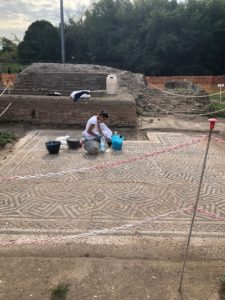
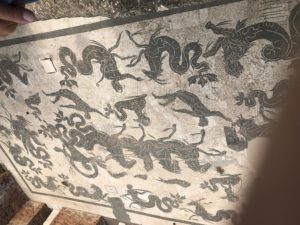
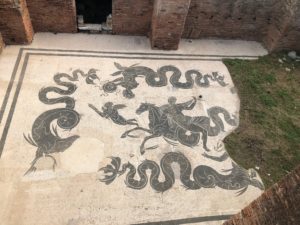
I recently returned from a few days in Rome, catching up with law partner friends and participating in fabulous dinners and sightseeing tours not otherwise available to me on an individual basis.
First on the Roman tour was a trip to Ostia Antica. As a family (including Grandma Suz who never turns down a trip to go abroad!), we visited Rome in 2002 and took a side trip to Pompeii, where a terrific guide regaled us with stories of life in this ancient town as we walked among the well-preserved ruins. With that experience as a backdrop, I visited Ostia Antica and saw many similarities to our Pompeii trip.
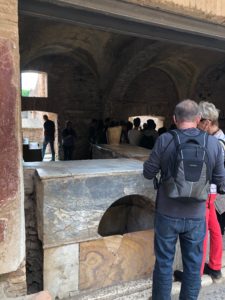
First, because of the national diversity of the residents and visitors to this seaport town of commerce, pictures were used to describe occupations and offices. In Pompeii we saw pictures or descriptions painted above doors, while in Ostia Antica, you could tell what the purpose of an office or room was through beautiful murals on the floor.

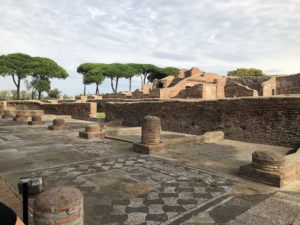
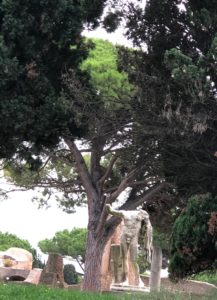
For example, grain often came from Egypt or North Africa, so in front of the office of the person who dealt with shipment of grains, there was a mosaic of a jar that used to hold grain, as well as pictures of wheat.
Just as in Milan where we live, there was a large gate that led to Rome, called “Porta Romana.”
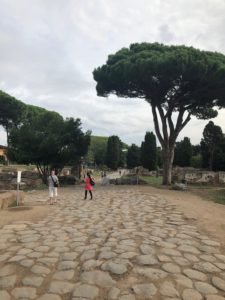
The cemetery of prominent residents was placed on the side of the road leading into Ostia Antica, with beautiful marble crypts and, again, painted descriptions of the deceased to let travelers know of the wealth of the family described.
The bath area was a big deal, with women and men allowed to use the saunas and cold and hot baths together (clothed). To keep the water hot, furnaces were created under the floor and ‘pipes’ of terra cotta were placed on the sides of the room so that people could rest their backs against the walls (sitting on marble) while heat came up from below them. Pretty cool. You can still see the terra cotta pipes along some of the walls.
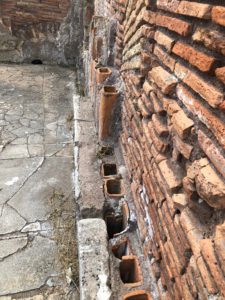
There was a 2000 seated amphitheatre and, believe it or not, if you were attending a special event, you would get a terra cotta ‘ticket’ that told the date of the event and the row/number for your seat, etched into the terra cotta piece! It seems like the Flintstones got that one right!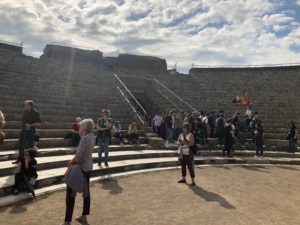
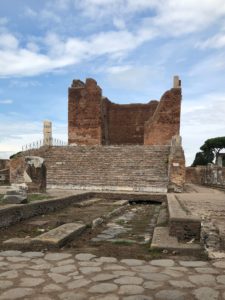
If you have an extra day in Rome, or you plan to visit Pompeii and want to see another example of an ancient town involved in trade and commerce, I encourage you to visit Ostia Antica!